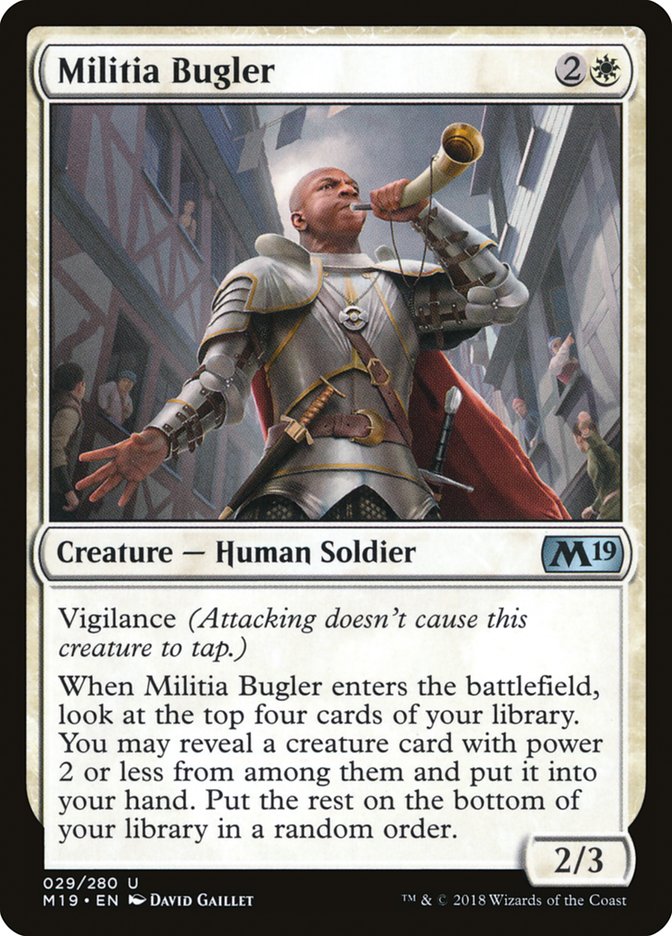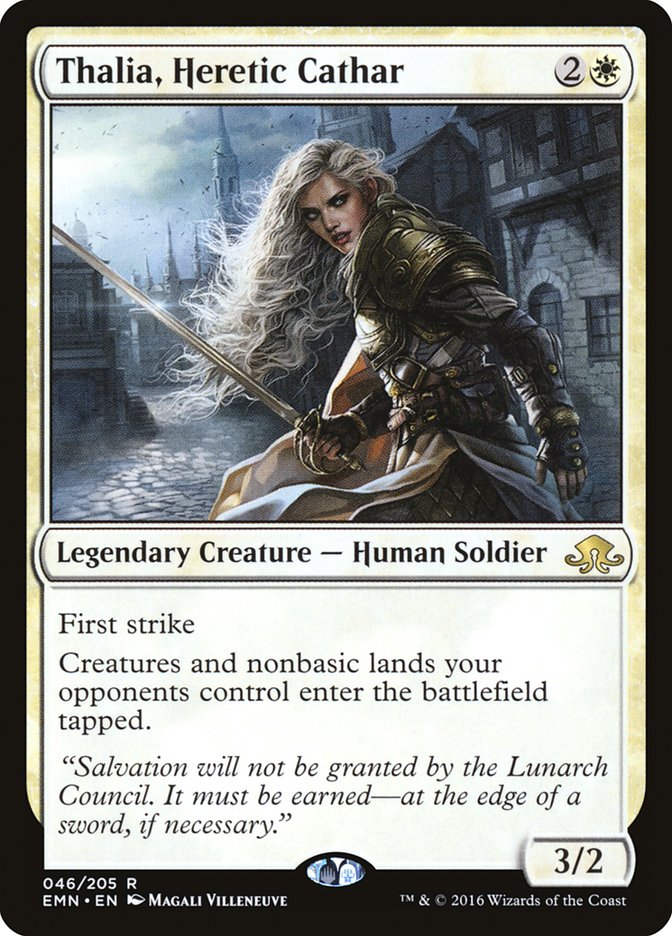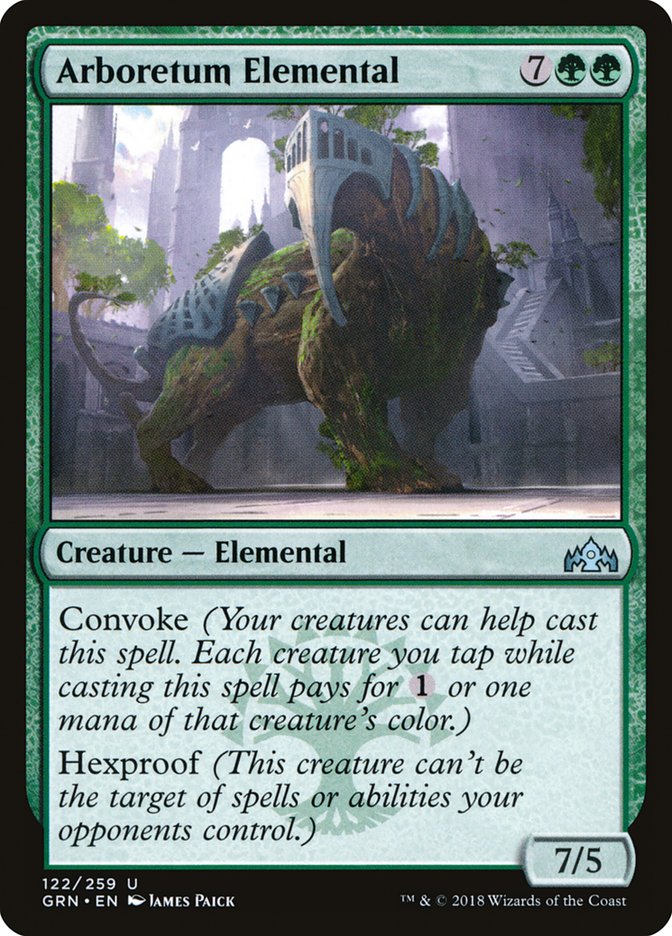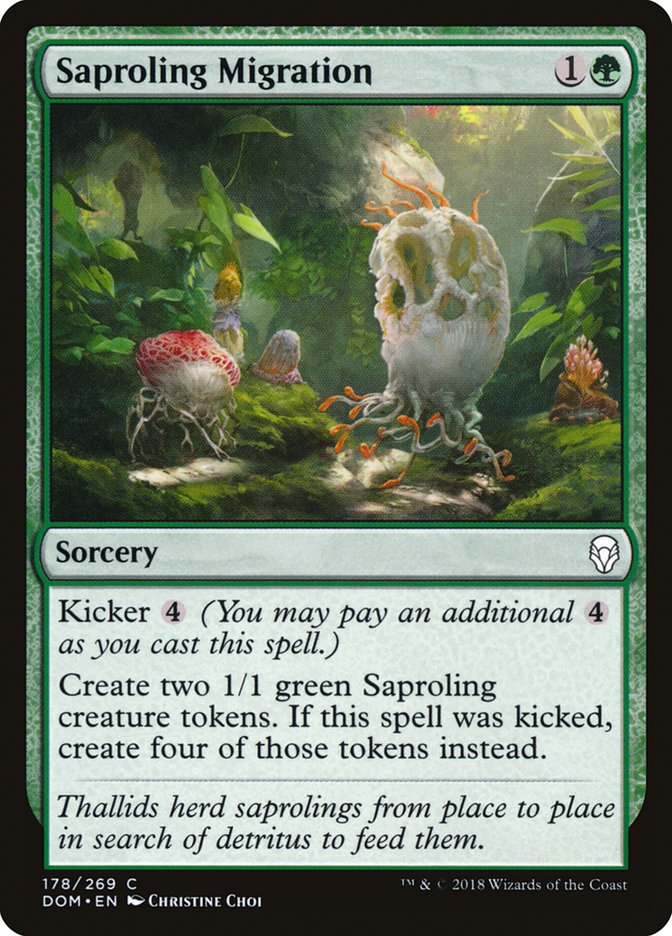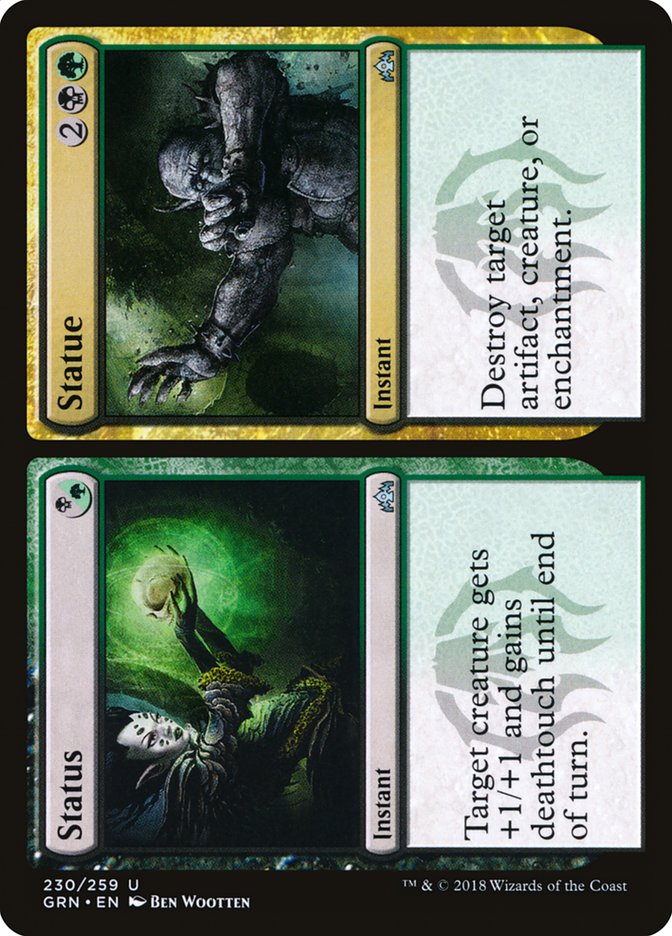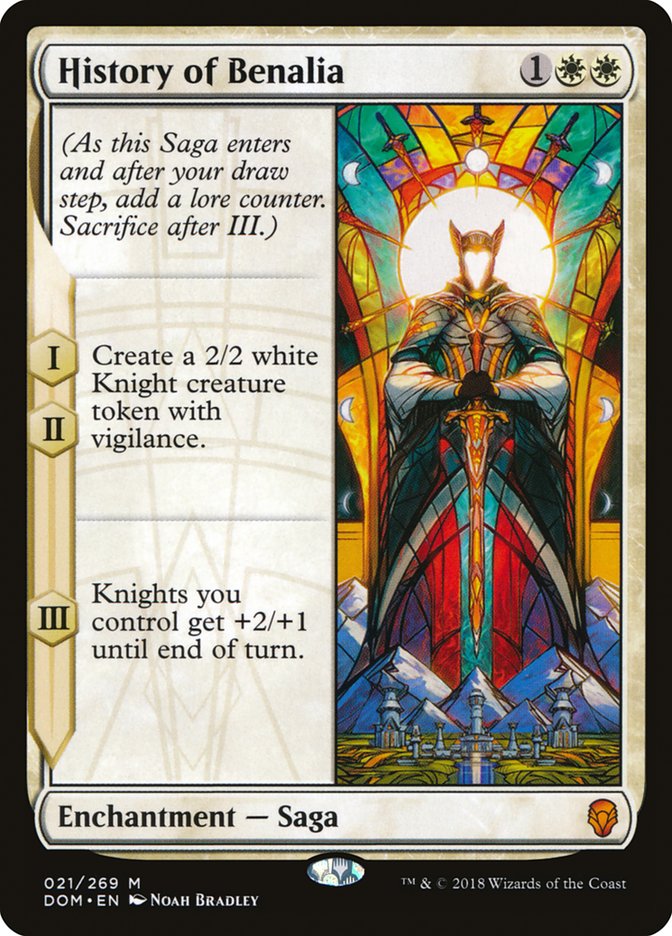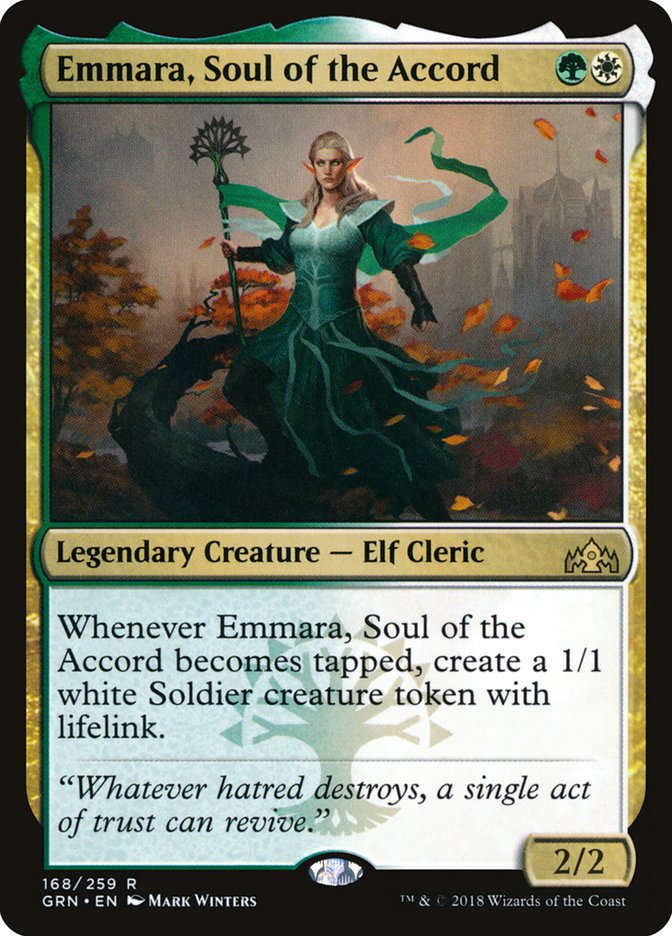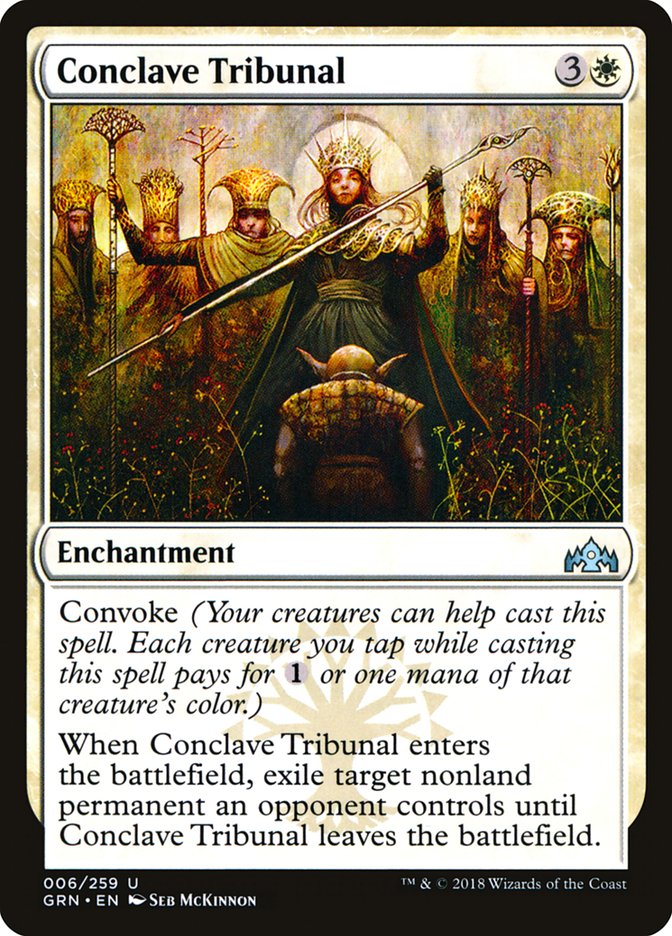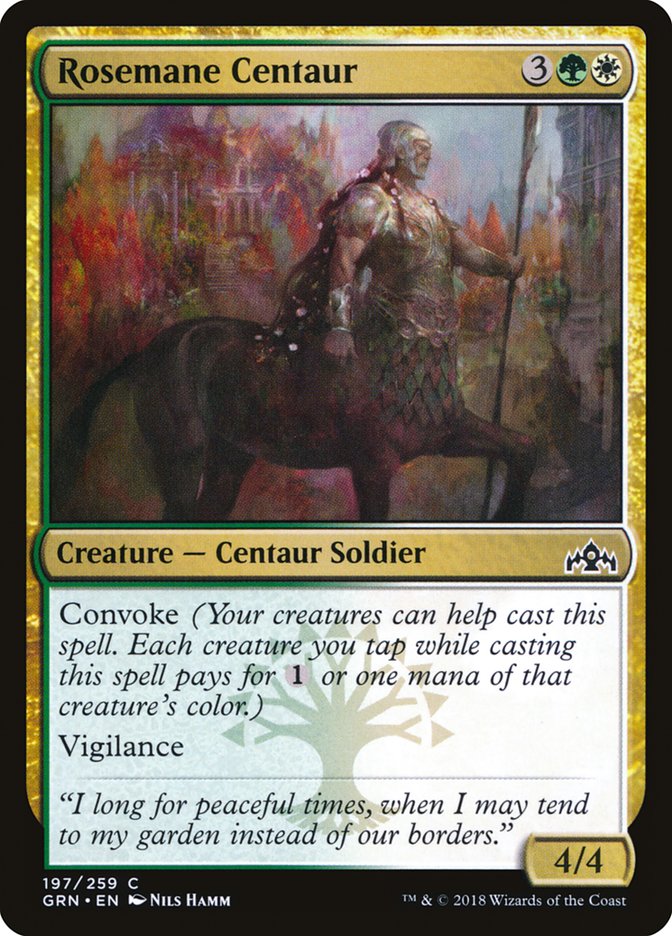I’m back!
Following a poor season, I fell off the Pro Tour last year and with the
offer to join Team BCW, decided to rededicate myself to the SCG Tour after
a year in which I only played six Opens. I’ve been happy with the decision,
as I find playing Opens much more enjoyable than Grand Prix, and the
Invitationals have become quite the spectacle with an added prize pool and
the arrival of SCG CON.
However, there’s nothing quite like playing on Magic’s biggest stage, so as
my calendar permitted, I was going to take my shots at getting back there.
After a 7-0 run with Modern Humans, one of those shots materialized into a
PTQ win and thus, my twelfth Pro Tour appearance, this November in Atlanta.
It’s customary to write about a significant tournament win, but in all
honesty, the tournament was not particularly notable. I committed to
cutting Militia Bugler entirely and while I’d like to say that decision
paid off in a big way, I was mostly carried by the power of Mantis Rider
and the other bread and butter elements of the deck. I still think Thalia,
Heretic Cathar is better than Militia Bugler in the current metagame and in
the abstract, and you can find more detailed thoughts on that decision in
my
article from last week
.
However, there’s a reason I bring up the win besides the sweet, sweet
brags:
I have to care about Standard again!
A year spent mostly on the SCG Tour has meant a year devoted to Modern, to
the point where I’ve nearly completely neglected the other formats. I tried
to play catch up with R/B Aggro for the Invitational in June, but my lack
of experience showed, leading to a 1-3 finish in the format and my first
missed Day 2 at an Invitational in years.
I don’t plan on playing catch up for Atlanta.
Fortunately, this is about the best time possible to start getting back
into Standard. We’re coming in on a rotation, meaning a mostly new format
and plenty of new cards, so I’m not at much of a disadvantage. Moreover, I
expect this rotation to be among the most significant in the history of
Standard.
Kaladesh
Block was extremely powerful, and combined with a few choice cards from Amonkhet Block, has largely dominated this year in Standard. The
only remaining pillar of Standard is Teferi, Hero of Dominaria so I expect
there to be plenty of Ixalan and Dominaria cards that get
the chance to shine once they’re removed from the shadows of Hazoret the
Fervent and The Scarab God, alongside some new goodies from Magic’s
favorite plane: Ravnica.
I’ve written many times about the propensity for players to lean too hard
on pre-rotation shells, replacing lost cards with similar effects, only to
see the metagame around them change to the point where their deck is no
longer viable. This Standard format is going to be a completely different
animal, and you should treat it as such, revisiting each old set and seeing
how they interact with the new cards as well as each other.
I mean, even if you wanted to remake R/B Aggro, how would you? The deck is
losing Bomat Courier, Heart of Kiran, Scrapheap Scrounger, Pia Nalaar,
Chandra, Torch of Defiance, Glorybringer, Hazoret the Fervent, Magma Spray,
Abrade, Unlicensed Disintegration, and Cut. What’s even left? Even with
some new tools, I doubt it’s enough to come close to that deck’s power.
With the color red losing so many of its best cards, I’m highly skeptical
about the future of Goblin Chainwhirler. This wouldn’t be the first time we
saw a dominant threat decline significantly post-rotation. After almost a
year of dominance, Delver of Secrets failed to recreate the same magic
after Scars of Mirrodin Block rotated, taking with it many of the
cheap spells needed to fuel the famous flyer.
Magic is a game of context, and even a card as powerful as Goblin
Chainwhirler needs the right cards around it to thrive, especially since it
has such a high color requirement. Maybe some sort of Wizard’s Lightning
deck stays around, but that kind of linear shell is never going to command
the kind of metagame share that R/B Aggro did. A big decline in the
prevalence of Goblin Chainwhirler removes a huge hurdle for decks that rely
on one-toughness creatures.
Having hate cards for your strategy in the format is one thing. Having the
best one exist as a four-of in the maindeck of a third or more of the
metagame is another, and it made such decks a non-starter for the last few
months.
With its chief predator on the decline, these decks can once again become a
force in Standard. And conveniently, the one returning mechanic in Guilds of Ravnica, convoke, plays perfectly with hordes of small
creatures. Here’s a first pass at three post-rotation decks featuring
convoke:
Creatures (18)
- 4 Llanowar Elves
- 4 Tendershoot Dryad
- 4 Slimefoot, the Stowaway
- 4 Sporecrown Thallid
- 2 Arboretum Elemental
Lands (24)
Spells (18)

This is the least convoke-heavy of the three decks, with only two copies of
Arboretum Elemental, but I wanted to highlight that card as a solid
addition to this kind of deck, because it gives you the ability to play
tall as well as wide. Don’t be tempted by Impervious Greatwurm since that
card costs so much mana that it’s overkill much of the time, and
indestructible doesn’t protect it from Vraska’s Contempt or Settle the
Wreckage. Arboretum Elemental is still vulnerable to the latter, but
dodging spot removal and being castable on curve make it the superior
option.
Saproling Migration is the most powerful token maker available after
rotation, so it makes a natural starting point for convoke, even if this
list doesn’t have much of the mechanic. I’m expecting at least one other
potential addition by the end of preview season, and this shell doesn’t
need much from other sets with powerful payoffs like Sporecrown Thallid and
Slimefoot, the Stowaway, which is an excellent mana sink to punish Settle
decks.
Saprolings also gets to play one of the more interesting cards previewed
thus far, Status. The first in a cycle of hybrid/gold split cards, I expect
most decks playing it will do so mainly for the removal half, which
compares somewhat similarly to Vraska’s Contempt now that the Gods are out
of the format. Statue can’t hit planeswalkers, but aggressive decks are
better at attacking them, and this deck uses the Status half quite well.
One of the issues with token decks is how they can be blanked by single,
large creatures. Anthems help this by either letting all your tokens trade
or simply making an alpha strike that loses a creature or two profitably.
Statue provides the latter effect, letting you trade up for a single mana,
leaving plenty left over to continue developing your battlefield.
Song of Freyalise is a card that I could see not making a final iteration
of the deck, but the vigilance it grants plays so well with convoke that I
expect the card to get better as more of the new set is revealed and the
deck gets more convoke cards to utilize. If nothing proves useful, I could
see Kitesail Freebooter in that slot as a way to protect against Settle the
Wreckage before Duresses inevitably come in from the sideboard.
Creatures (22)
- 1 Mentor of the Meek
- 4 Dauntless Bodyguard
- 4 Knight of Grace
- 3 Shalai, Voice of Plenty
- 2 Remorseful Cleric
- 4 Emmara, Soul of the Accord
- 4 Rosemane Centaur
Planeswalkers (3)
Lands (25)
Spells (10)

From the least convoke-heavy deck of the bunch to the most, this list is
going full bore with eight convoke cards. It’s important not to go
overboard on them, since there’s diminishing returns on them, but this deck
can support them because of its synergies with the mechanic.
The first, and most powerful, is History of Benalia. Making two tokens is
already a good start, but the fact that they have vigilance means you get
to potentially attack and use them for mana in the same turn, which is
hugely punishing to any stumble and incentivizes the opponent to use spot
removal on tokens, leaving your other creatures free. Because of the power
of History, I’ve leaned towards other Knights, though it’s possible that
the tribal synergy is unnecessary.
The second convoke enabler is Emmara, Soul of the Accord, which doesn’t
jump off the page, though I think it is quite powerful. It compares well
with Precinct Captain, a card that saw significant play in its day, and
Emmara only gets better when you have good out of combat ways to tap it.
Jadine took a deep dive on Emmara today, but suffice it to say it’s one of
the primary motivations for building this kind of deck.
As for the two convoke cards themselves, Conclave Tribunal is the big
payoff, while Rosemane Centaur is a bit more speculative. Tribunal is
already an average removal spell on rate before factoring in convoke, and
once you get to start casting it for two or one mana it gets very
impressive. Tapping your creatures instead of attacking may seem weak, but
much of the time convoke is going to act as a double-spell enabler, letting
you cast it and a one-drop on turn 4, or potentially a two-drop and it,
with the help of the second History of Benalia token.
The turn 4 threat + removal play is a hallmark of Standard in recent years.
The ease with which Chandra, Torch of Defiance enabled those turns is part
of why the card has been so powerful and while the threat you’re casting
isn’t as powerful, it’s still an effective sequence that puts you
significantly ahead of your opponent. The fact that Conclave Tribunal
enables double spell turns so easily is a huge reason why I think it’s
among the best cards previewed thus far.
Rosemane Centaur initially struck me as a Draft staple, and while I think
that’ll still be the case, on a closer look I think it has the stats to
compete in Constructed. It shouldn’t be that hard to cast it for three
mana, at which point it becomes something of a Loxodon Smiter. The
vigilance plays well with the various pump effects that fill out the high
end of the deck’s curve and are meant to provide value to the cheap
creatures and tokens you generate, and the 4/4 body trades with Steel Leaf
Champion while matching up well with most similar-costed creatures.
It’s possible that this deck wants Saporling Migration to further the
convoke theme while moving away from Ajani, Adversary of Tyrants and
towards Huatli, Radiant Champion, but I like playing more powerful
individual cards, and I think the interaction with Ajani, Adversary of
Tyrants and Remorseful Cleric could be quite powerful with all the
graveyard-centric mechanics in Guilds of Ravnica. The other option
is to cut into the Knight synergies with History of Benalia, but that cuts
your aggressive potential by quite a bit.
The last deck is a traditional white aggressive shell, which gives you the
best chance of double or even triple spelling with Conclave Tribunal, thus
maximizing the card’s potential. This kind of deck doesn’t want too many
removal spells, so having one that is potentially so cheap while still
answering most threats is excellent.
Creatures (25)
- 2 Mavren Fein, Dusk Apostle
- 1 Duskborne Skymarcher
- 4 Adanto Vanguard
- 4 Skymarcher Aspirant
- 4 Benalish Marshal
- 4 Dauntless Bodyguard
- 4 Knight of Grace
- 2 Remorseful Cleric
Planeswalkers (3)
Lands (24)
Spells (8)

The problem here is the mixed tribe identity. Unfortunately, none of the
Vampire Knights are good fits, but there aren’t many tribal payoffs so the
mix doesn’t hurt too much. All the cards are fine standalones, save
possibly Duskborne Skymarcher, but I like having cheap fliers with Ajani,
Adversary of Tyrants and Benalish Marshal.
Mavren Fein is another card that can help convoke, supplying some free
tokens that make mana before setting up some big attacks. There will be
some awkward draws where you curve two Knights into it or two Vampires into
History of Benalia, but if you’re curving out you should still be in good
shape.
Of course, Benalish Marshal is the big payoff here. In addition to the
cheap creatures losing out to Goblin Chainwhirler, Benalish Marshal didn’t
match up well against the plethora of cheap red removal, which helped keep
decks like this at bay. Lightning Strike is still around, but Abrade is
gone, and with red weakened overall, I’m hopeful Benalish Marshal can stick
around more reliably in this format than the last, and if it does then it’s
going to be a bad time for your opponents.
I’m expecting the Boros guild to provide a few additions here as preview
season continues, since it’s historically so aggressive and its mechanic,
mentor, will play well here. You may even want a light red splash with
Sacred Foundry and Clifftop Retreat when it all shakes out. But the power
of Benalish Marshal is likely going to keep me wanting a nearly mono-white
manabase unless something really powerful hits.
It’s very early in preview season, but with my full slate of Modern
tournaments between now and the Pro Tour, I’m going to have to get a head
start on my Standard testing and work on the format slowly over the coming
months. It’s been a while since I was playing 40+ weekends of Magic a year
trying to make the Players’ Championship while simultaneously maintaining
my Pro Club level, but with any luck I’ll be back there by next year.
I have a feeling by the end of next year, I’ll be channeling my inner
Roger
Murtaugh.


